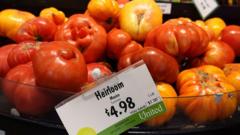Denmark has become the first country to impose a tax on methane emissions from livestock, in response to its significant agricultural climate impact. This innovative measure is designed to encourage more eco-friendly choices among consumers and reduce the country's agricultural pollution.
Denmark Implements Pioneering Tax on Livestock Methane Emissions

Denmark Implements Pioneering Tax on Livestock Methane Emissions
A groundbreaking initiative targeting methane emissions from farm animals has been introduced in Denmark, aiming to mitigate agricultural climate pollution.
Denmark, a nation renowned for its cutting-edge design and culinary innovations, is now setting a global precedent with the introduction of the world's first tax on livestock methane emissions. This novel approach comes as a direct response to the alarming environmental impact of agricultural operations in the country, which boasts a livestock population five times greater than its human residents.
With nearly two-thirds of Denmark's land dedicated to farming, lawmakers have faced mounting pressure to address the growing share of climate pollution attributed to agriculture. The recent legislation, passed by an unlikely coalition government comprising three politically diverse parties, targets the methane emissions generated by the burps, farts, and manure of pigs and cows. This makes Denmark the first nation to enact such a specific climate levy on livestock.
Public opinion appears to support the initiative, as exemplified by Copenhagen shopper Rasmus Angelsnes, who acknowledged its potential to influence consumption habits. Despite his own shopping choices, which included pork belly, Angelsnes expressed optimism that the tax could inspire consumers to lean towards more climate-friendly alternatives.
As nations worldwide grapple with the impacts of climate change, Denmark's proactive step serves as a likely model for other countries looking to mitigate methane emissions from agriculture, signaling a shift towards more sustainable farming practices and consumer behavior.





















